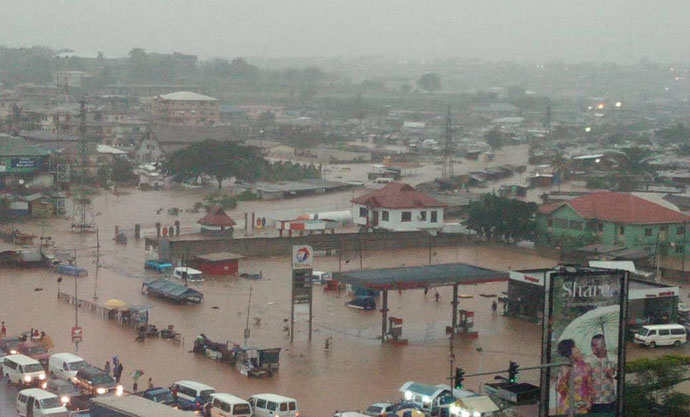
Floods in Ghana: The need to avert future disasters
Once again the floods have subsided and suddenly all seem well with our city and life goes on as usual.
Advertisement
This is known as wetlands and humans through rules and regulations have a duty to protect them.
Wetland is a generic term used to define the universe of wet
Wetlands include some of the most biologically and
They include ecosystems that are
Wetland refers to all the different kinds of wet
Wetlands typically occur in topographic settings where surface water collects and (or)
The Ramsar Convention defines wetlands as “areas of marsh, fen,
Unfortunately, the Sakumono Ramsar
Wetlands serve as receptacles for excess water from river courses and rainfall, help create
Rivers could enhance water transport within cities and ultimately reduce atmospheric heat.
On the contrary, wetlands have become an albatross around the neck of our cities; causing floods, killing innocent people, blocking roads and destroying property due to human activities.
Research by Scientists at CSIR- BRRI on wetlands revealed invasion by, housing, educational, religious and informal economic activities with all kinds of structures which eventually prevent
Such development
Accra witnessed the loss of about 154 lives with over 150 persons sustaining various degrees of burns after the Odo River overflowed its banks on 3 rd
The Aboabo River over-flooded its banks and claimed about five lives in 27
Protecting our low lying wetlands means the city authorities making deliberate attempts to create proper boundaries in approved planning layouts to prevent encroachment and illicit reclaiming of such lands for physical development.
Wetlands in Ghana are explicitly protected by the national building regulations, 1996, LI 1630, 13(2)—Site Requirements state clearly that, “No site liable to flooding shall be built upon without adequate provision for flood control”.
Regulation 20(2) further states
the subsoil water-table during wet seasons”.
Unfortunately, enforcement of these laws has reduced to the barest minimum to the extent that “filling” of our wetlands for buildings has become
There seem to be no lessons learnt from the previous disasters such that no drastic action have been taken to prevent future grievous ‘human disasters’.
Reports by BBC News stated that bold initiative to save Kenya’s wetlands affected plush homes and shopping malls including over 4,000 buildings and Ukay Centre’s $9m property, as well as punishment for those who gave the go-ahead for these wetlands to be developed.
City authorities in Ghana including the Environmental Protection Agency (EPA) should collaborate with MMDAs to ensure that haphazard unapproved development of wetlands are stopped with immediate effect and existing buildings on waterways demolished to allow water to flow without interference.
Property developers must consult the right built environment professionals to design befitting buildings as spelt out in the national building regulations, 1996, LI 1630 to turn our wetlands into a blessing – not curse- for a sustainable development of our motherland, Ghana.



